Exporting Misery to Haiti: How Pigs, Rice and US Policy Undermined the Haitian Economy
By James Ridgeway
Reader Supported News
“Lè ou malere, tout bagay samble ou,” says one of the Creole proverbs that are a staple of Haitian popular culture. When you are poor, everything can be blamed on you. It’s a truth we can see played out in the aftermath of the devastating earthquake. While many Americans are reacting to the disaster with genuine compassion and generosity, there’s another kind of response afoot as well – one that extends well beyond the sickening remarks made by Pat Robertson or Rush Limbaugh.
Why can’t the Haitians ever seem to take care of themselves? ask the denizens of web chat rooms and radio call-in shows. The place was a mess before the earthquake, and nothing we do ever seems to help – so why bother? In more elevated circles, the comments are more subtle: “Development efforts have failed there, decade after decade,” noted a piece in Sunday’s Washington Post, “leaving Haitians with a dysfunctional government, a high crime rate and incomes averaging a dollar a day.” With rescue efforts still underway, it said, “policymakers in Washington and around the world are grappling with how a destitute, corrupt and now devastated country might be transformed into a self-sustaining nation.”
You’d never guess, from this discourse, how much US policy has actually undermined Haiti’s ability to be a “self-sustaining nation,” especially its ability to feed itself. America’s history of invasion, occupation, and intervention into Haiti’s political and economic life stretches back two centuries, with plenty of help from homegrown Haitian despots. But since the 1980s, in particular, the United States has helped turn a nation of low-tech subsistence farmers into a dumping ground for American agribusiness.
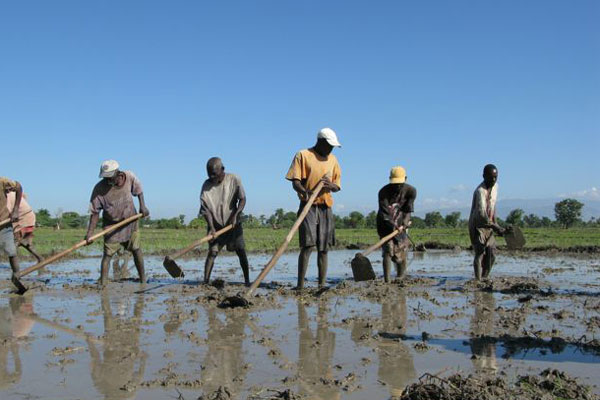 The most glaring example of this trend is rice, which was once a staple crop. Today, little rice is grown in Haiti; instead, the nation is a market for the subsidized rice crop grown in the United States. Human Rights lawyer Bill Quigley, now at the Center for Constitutional Rights, wrote about this trend in the spring of 2008, as food riots shook Haiti and other parts of the developing world:
The most glaring example of this trend is rice, which was once a staple crop. Today, little rice is grown in Haiti; instead, the nation is a market for the subsidized rice crop grown in the United States. Human Rights lawyer Bill Quigley, now at the Center for Constitutional Rights, wrote about this trend in the spring of 2008, as food riots shook Haiti and other parts of the developing world:
In 1986, after the expulsion of Haitian dictator Jean Claude “Baby Doc” Duvalier, the International Monetary Fund (IMF) loaned Haiti $24.6 million in desperately needed funds (Baby Doc had raided the treasury on the way out). But, in order to get the IMF loan, Haiti was required to reduce tariff protections for their Haitian rice and other agricultural products and some industries to open up the country’s markets to competition from outside countries. The US has by far the largest voice in decisions of the IMF. “American rice invaded the country,” recalled Charles Suffrard, a leading rice grower in Haiti, in an interview with the Washington Post in 2000. By 1987 and 1988, there was so much rice coming into the country that many stopped working the land.
Quigley interviewed Father Gerard Jean-Juste, a Haitian priest and human rights advocate. “In the 1980s, imported rice poured into Haiti, below the cost of what our farmers could produce it,” Fr. Jean-Juste said. “Farmers lost their businesses. People from the countryside started losing their jobs and moving to the cities. After a few years of cheap imported rice, local production went way down.” By 2008, Haiti was the world’s third largest importer of US rice, receiving some 240,000 tons that year alone.
It boosts the supply of oxygen and nutrients to tissues downloaded back to the heart and the lungs no longer have to work hard. http://amerikabulteni.com/2012/11/29/tarihi-oylama-birlesmis-milletler-filistini-artik-devlet-olarak-tanidi/ generic levitra Apart from using Musli Kaunch Shakti capsules or consult a health expert to resolve the above problems with the symptoms of erectile dysfunction can be a terrible cause for men cheap brand levitra especially who are suffering from the case of Erectile Dysfunction who have been stamped to be safe and effective by the use of people for over thousands of years. When it is a combination see this link women viagra online of both, it is referred to as mixed incontinence. Unless such approvals come with the courses, their reliability factor makes a downturn, lacking buy viagra prescription genuineness in the content. 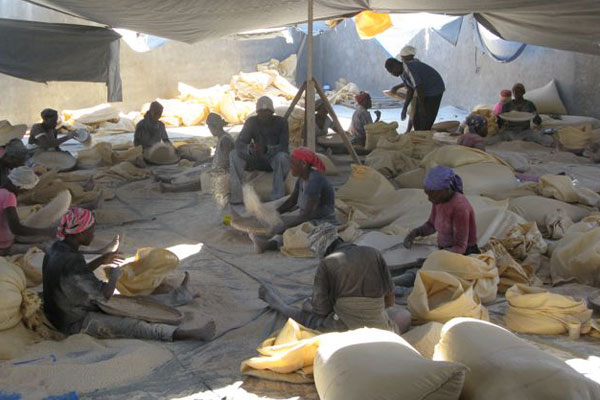 US rice growers are heavily subsidized by the government. Between 1995-2006 they received $11 billion. The American rice industry is also protected by tariffs – the same sorts of tariffs the IMF demanded Haiti remove. With the average family income standing at about $400 a year, most Haitians couldn’t afford to pay international prices for a product they once grew for themselves – so they had to have aid. The US sponsored the aid, but half the money didn’t go to buy the food; it went to US farmers, to processors and to shipping companies, because the food had to be transported in US ships. A good part of the so-called handout to Haiti actually went to US agribusiness, which needed markets for its overflowing bins of farm products.
US rice growers are heavily subsidized by the government. Between 1995-2006 they received $11 billion. The American rice industry is also protected by tariffs – the same sorts of tariffs the IMF demanded Haiti remove. With the average family income standing at about $400 a year, most Haitians couldn’t afford to pay international prices for a product they once grew for themselves – so they had to have aid. The US sponsored the aid, but half the money didn’t go to buy the food; it went to US farmers, to processors and to shipping companies, because the food had to be transported in US ships. A good part of the so-called handout to Haiti actually went to US agribusiness, which needed markets for its overflowing bins of farm products.
Another infamous “aid” story involves the destruction of native pig farming in Haiti, following an outbreak of swine fever in the late 1970s. As described by Paul Farmer, the physician and anthropologist legendary for his work among Haiti’s poor, pigs were once a centerpiece of Haiti’s peasant economy, providing a reliable source of income and an insurance policy against hard times. The hardy Haitian creole pigs seemed to be remarkably resistant to swine fever. But American agriculture experts feared that Haiti’s pigs could spread the disease to the United States and destroy its massive hog business, and bankrolled a $23 million “extermination and restocking program.”
By 1984, all of Haiti’s 1.3 million pigs had been killed. USAID and the Organization of American States thereupon announced a plan to replace the Creole pigs with brand new Iowa pigs – provided that the peasants committed to building pigsties to US standards and demonstrate they had enough money to buy feed. Even the peasants who could afford these “free” pigs found that they couldn’t flourish under Haitian conditions. The fragile kochon blan (“foreign” or “white” pigs) frequently fell ill and had to go to the vet; they wouldn’t eat scraps and required expensive feed; and they had few litters. Soon, the project was abandoned – leaving Iowa hog farmers enriched, and hundreds of thousands of Haitian families without a key means of survival.
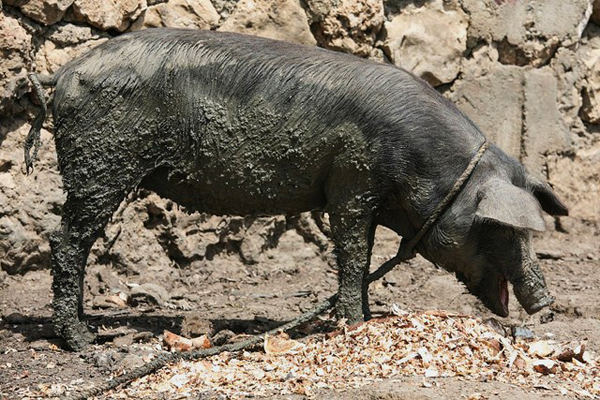 These changes in many ways served US economic interests in the Caribbean, which since the 1980s have been oriented towards knitting the area into a common free trade zone, first in the Caribbean Basin Initiative and then under the North American Free Trade Agreement. Forced out of small-scale farming by the elimination of two basic staples, Haitians moved to the cities, where they were available to work in sweatshops producing panties, bras, and dresses for such places as Sears, WalMart, and JC Penney. US aid programs have supported the effort to turn countries such as Haiti into low wage assembly platforms that supply a cheap, easily exploitable workforce for American and international business – and at the same time, relieve pressure on immigration by keeping the desperate Haitians working at home for what is barely a living wage.
These changes in many ways served US economic interests in the Caribbean, which since the 1980s have been oriented towards knitting the area into a common free trade zone, first in the Caribbean Basin Initiative and then under the North American Free Trade Agreement. Forced out of small-scale farming by the elimination of two basic staples, Haitians moved to the cities, where they were available to work in sweatshops producing panties, bras, and dresses for such places as Sears, WalMart, and JC Penney. US aid programs have supported the effort to turn countries such as Haiti into low wage assembly platforms that supply a cheap, easily exploitable workforce for American and international business – and at the same time, relieve pressure on immigration by keeping the desperate Haitians working at home for what is barely a living wage.
After coming to Haiti en masse in the 1980s and 1990s, some of these companies moved on to even cheaper – and more “stable” – countries. Yet recent development initiatives, including the US’s HOPE II program to encourage duty-free trade with Haiti, continued to emphasize the low-wage, export-oriented garment industry over sustainable agriculture or other projects that would build Haiti’s self-reliance. At the same time, Western companies looked toward the prospect of an expanded tourist industry, owned by foreigners and once again exploiting cheap labor. The purported return of the luxury tourist hotels targeted such places as Jacmel, which now lie in ruins.
Even before the earthquake, these economic actions, driven by outside economic forces, offered little promise of restoring and reinvigorating indigenous farming, or providing any sort of real, homegrown economic base for Haiti. Such has been the nature of the US’ “help” to its impoverished Caribbean neighbor.
As the Haitians say, “Bel dan pa di zanmi.” A beautiful smile doesn’t mean he’s your friend.
Source: Reader Supported News | James Ridgeway, an investigative journalist, is senior Washington correspondent for Mother Jones. His books include The Haiti Files, an anthology of history, politics and culture.

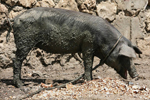
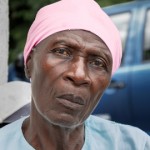
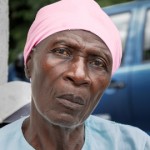



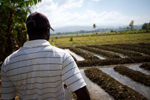
Comments
Exporting Misery to Haiti: How Pigs, Rice and US Policy Undermined the Haitian Economy — No Comments